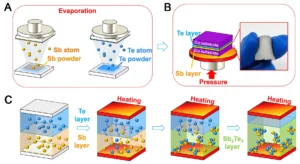Distance and displacement :
Distance’ is the length of the actual path travelled by an object in motion while going from one point to another, whereas displacement is the minimum distance between the starting and finishing points.
Difference between distance and displacement:
Distance is a scalar quantity as it only depends upon the magnitude and not the direction.
Displacement is a vector quantity as it depends upon both magnitude and direction.
The distance can only have positive values, displacement can be positive, negative, and even zero.
Speed and velocity :
Speed and velocity :
The distance travelled in one direction by an object in unit time is called its velocity. Here, unit time can be one second, one minute, one hour, etc. If large units are used, one year can also be used as a unit of time.
The displacement that occurs in unit time is called velocity.
Velocity = Displacement / Time
Velocity is the displacement that occurs in unit time.
Speed:
It is a measure of the rate of change of the distance traveled by a moving object.
Speed = Total distance travelled / Time required
- The units of speed and velocity are the same. In the SI system, the unit is m/s while in the CGS system, it is cm/s.
- Speed is related to distance while velocity is related to the displacement.
- If the motion is along a straight line, the values of speed and velocity are the same, otherwise they can be different.
The first scientist to measure speed as the distance /time was Galileo. The speed of sound in dry air is 343.2 m/s while the speed of light is about 3 × 108 m/s. The speed of revolution of the earth around the sun is about 29770 m/s.
Uniform and non-uniform linear motion:
- If an object covers equal distances in equal time intervals, it is said to be moving with uniform speed.
- If an object covers unequal distances in equal time intervals, it is said to be moving with non-uniform speed. For example, the motion of a vehicle being driven through heavy traffic.
Acceleration :
The rate of change of velocity is called acceleration.
Acceleration = Change in velocity / Time
Positive, negative and zero acceleration :
- An object can have positive or negative acceleration.
- When the velocity of an object increases, the acceleration is positive. In this case, the acceleration is in the direction of velocity.
- When the velocity of an object decreases with time, it has negative acceleration. Negative acceleration is also called deceleration. Its direction is opposite to the direction of velocity.
- If the velocity of the object does not change with time, it has zero acceleration.
Uniform acceleration:
If the velocity changes by equal amounts in equal time intervals, the object is said to be in uniform acceleration.
Non-uniform acceleration:
If the velocity changes by unequal amounts in equal time intervals, the object is said to be in non-uniform acceleration.
Equation of motion :
Suppose an object is in motion along a straight line with initial velocity ‘u’. It attains a final velocity ‘v’ in time ‘t’ due to acceleration ‘a’ its displacement is ‘s’. The three equations of motion can be written as:
v = u + at
This is the relation between velocity and time.
s = u t + 1/2at2
This is the relation between displacement and time.
v2 = u2 + 2as
This is the relation between displacement and velocity.
Uniform circular motion :
The speed of the tip of a clock is constant, but the direction of its displacement and therefore, its velocity is constantly changing. As the tip is moving along a circular path, its motion is called uniform circular motion.
When an object is moving with a constant speed along a circular path, the change in velocity is only due to the change in direction. Hence, it is accelerated motion.
When an object moves with constant speed along a circular path, the motion is called uniform circular motion.
e.g. The motion of a stone in a sling or that of any point on a bicycle wheel when they are in uniform motion.
If an object, moving along a circular path of radius ‘r’, takes time ‘t’ to come back to its starting position, its speed can be determined using the formula given below :
Speed = Circumference / Time
V = 2π r / t
Where, r is the radius of the circle.
Newton’s laws of motion:
Newton’s first law : It explains the phenomenon of inertia, i.e. the inability of an object to change its state of motion on its own.
An object continues to remain at rest or in a state of uniform motion along a straight line unless an external unbalanced force acts on it.’
Momentum has magnitude as well as direction. Its direction is the same as that of velocity. In SI system, the unit of momentum is kg m/s, while in CGS system, it is g cm/s.
If an unbalanced force applied on an object causes a change in the velocity of the object, then it also causes a change in its momentum. The force necessary to cause a change in the momentum of an object depends upon the rate of change of momentum.
Momentum (P) : Momentum is the product of mass and velocity of an object.
P = m v
Momentum is a vector quantity.
Newton’s second law :
‘The rate of change of momentum is proportional to the applied force and the change of momentum occurs in the direction of the force.’
In SI system, the unit of force is newton.
Newton (N) : The force necessary to cause an acceleration of 1 m/s2 in an object of mass 1 kg is called 1 newton.
1 N = 1 kg × 1 m/s2
In CGS system the unit of force is a dyne. Dyne: The force necessary to cause an acceleration of 1 cm/s2 in an object of mass 1 gm is called 1 dyne.
1 dyne = 1 g × 1 cm/s2
Newton’s third law :
Every action force has an equal and opposite reaction force which acts simultaneously.’
- Action and reaction are terms that express force.
- These forces act in pairs. One force cannot exist by itself.
- Action and reaction forces act simultaneously.
- Action and reaction forces act on different objects. They do not act on the same object and hence cannot cancel each other’s effect.
Law of conservation of momentum
The magnitude of total final momentum = The magnitude of total initial momentum.
Thus, if no external force is acting on two objects, then their total initial momentum is equal to their total final momentum. This statement is true for any number of objects.
‘When no external force acts on two interacting objects, their total momentum remains constant. It does not change.’
This is a corollary to Newton’s third law of motion. The momentum is unchanged after the collision. The momentum gets redistributed between the colliding objects. The momentum of one of the objects decreases while that of the other increases. Thus, we can also state this corollary as follows.
‘When two objects collide, the total momentum before collision is equal to the total momentum after collision.’
In order to understand this principle, let us consider the example of a bullet fired from a gun.
As the mass of the gun is much higher than the mass of the bullet, the velocity of the gun is much smaller than the velocity of the bullet. The magnitude of the momentum of the bullet and that of the gun are equal and their directions are opposite. Thus, the total momentum is constant. Total momentum is also constant during the launch of a rocket.




